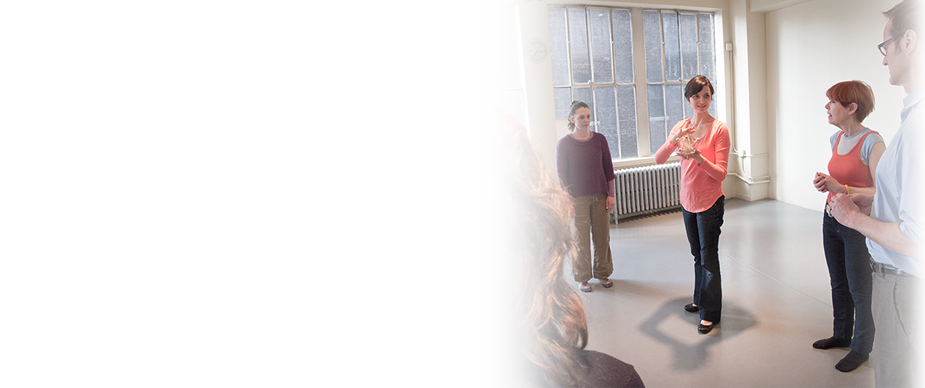WALK the Talk
/Do you ever enter into a room feeling a bit slouchy? One of the factors that can affect how you take up your space is literally how you walk into the room and walking habits aren't always conscious.
Also, the #1 postural issue that I see when people walk may not be what you think.
Most people, even if they slouch and roll their shoulders forward, tend to lean backwards in order to take a step. By "lean back", I meant tip the upper body back and arching the lower back or sitting into the hips. To compound matters, efforts to lift the chest and "straighten up" compound the problem and actually cause more backwards leaning.
Many people habitually lean back when they stand without realizing it and when they walk they lean back even more. Leaning back then becomes associated with transfering weight from one foot to another to take a step.
With so much focus on posture being centered around the shoulders, what's often missed is the impact of the rest of the body on how you stand and move and being able to sense what's actually going on.
One of the first things I teach in my classes is how you can practice sensing better, so that you know what your body is doing and how to correct it.
Here's a compare and contrast exercise that you can try with your walking to help you sense how you walk and to help you walk a little taller.
You can try this in an indoor or outdoor space. Just make sure you have a little room.
Start by making sure you are looking out and staying present, not dropping your head, as that will immediately affect your gait.
Next walk around and notice the feeling of each foot as it comes forward and lands on the ground. Do this for about 30 seconds or so. Don't actively try to do anyting. Just notice the feeling of focusing on that part of your gait.
Next, switch your focus to sensing each leg as it moves back and straightens. Again, simply sense it. Don't try and manipulate your walk.
You could try each version a few times and notice if anything feels different.
Focusing on the legs in the "going back" phase is often the subtle cue that is needed to help people stay more upright and avoid leaning backwards.
Why?
Because the leaning back is a response to reaching the foot way out in front of you. Try exaggerating that, and I expect you'll feel that you lean back. If you're not sure, look in a mirror.
Your gait involves your feet moving behind you as much as it's about putting your feet in front of you, but we get so front-focused when we rush around, that we often overdo the forward part with the legs, which makes the upper body tip back to counter-balance.
In running, this is called overstriding, but it happens just as easily with walking.
As for the shoulders --I often say how much the head and neck affect them, but how you coordinate what's under the shoulders also impacts how easily you can keep them relaxed and balanced.
The walking pattern I described doesn't apply to everyone, but it applies to most people. Try the exercise above and see what you observe and if anything changes.
And think about it next time you walk into a room for a meeting. Do you feel a little taller and more present? Even if it's a Zoom meeting, you could take a walk to your kitchen and back and think about your walking as you approach your desk.
Want to learn more? Click here to learn more about my classes for women. Click here to read more about classes for everyone.















